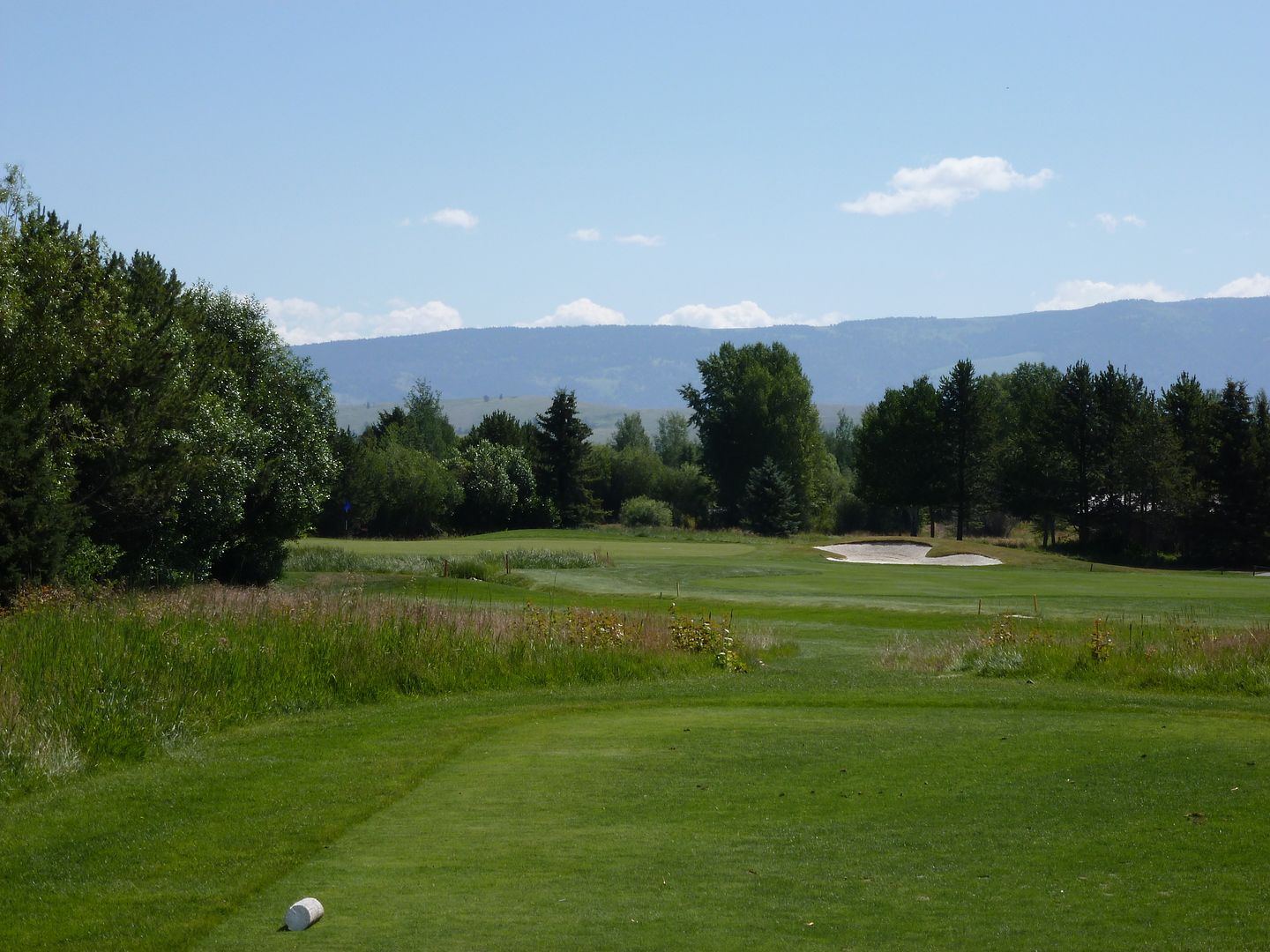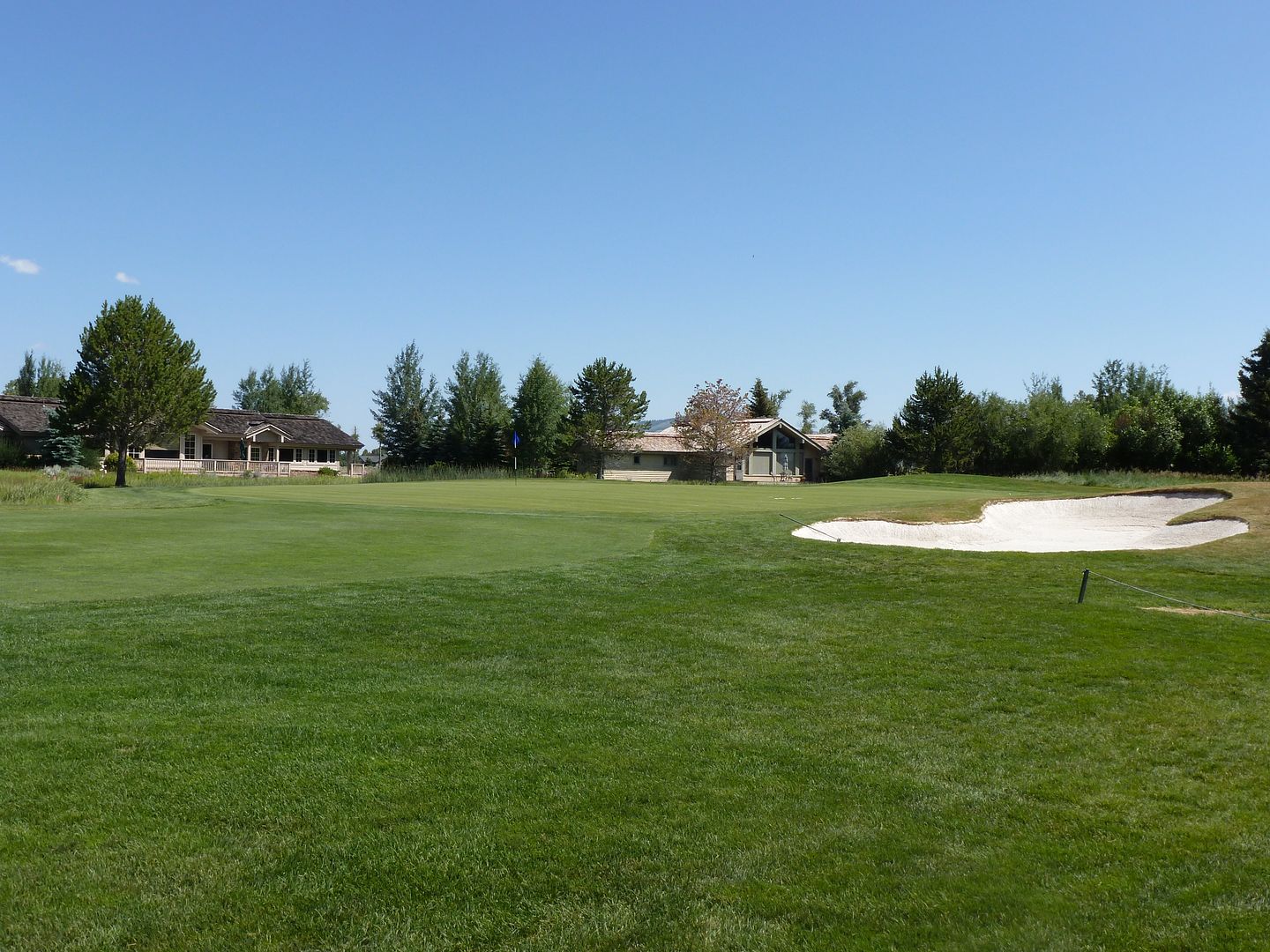First up,
Jackson Hole G&TC Course History
Course History (taken from
http://www.jhgtc.com/info/golf.asp without permission)
Laurance Rockefeller, an avid golfer and resort property pioneer, saw a diamond in the rough when he purchased the Jackson Hole Golf & Tennis Club in 1967. In 1971 Rockefeller contracted Robert Trent Jones II to develop a major remodeling plan for the original Bob Baldock designed course.
In 2004 Jones was contracted once again for a second redesign of the course.
“I am thrilled to be returning to Jackson Hole after 30 years, and to have a hand in enhancing this wonderful course. This has always been one of my favorite places and now that the Club has asked me to return and lead this project, it is as much an honor today as it was when Mr. Rockefeller first hired me in 1973.”
- Robert Trent Jones II
Scorecard Information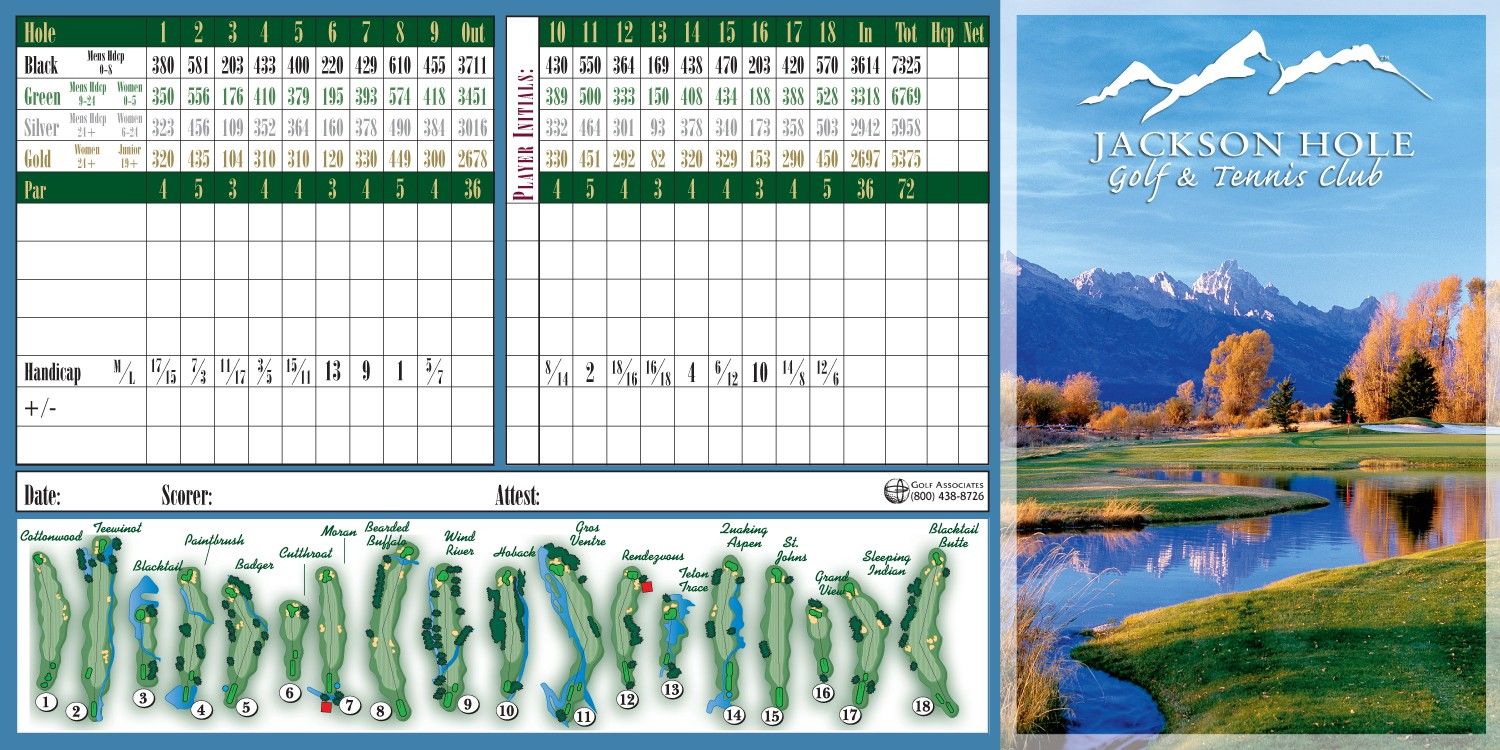
USGA Course / Slope Rating
Men
Blue 74.4/133
White 71.3/129
Red 67.4/123
General Impressions1) Along with 3 Creek Ranch, easily the most scenic of the golf courses in the area. It is obvious that the course was designed with the line of play to have the mountains as a backdrop.
2) The course does not have trees on many holes. Where there are trees, there are too many of them and they intrude on corridors.
3) The weakest set of greens in the area. In-line with many older courses, the greens have more tilt than undulation, but at least at the speed I played them, there was little movement.
Hole-by-Hole Photos and Descriptions - All yardages will be from the 6700 yard green tees.
Hole 1: Par 4, 350 YardsNot a bad view from the first tee!

Straightforward first hole. Tee shot to a gently undulating fairway with plenty of width and bunkers the protect the outside of a gentle dogleg. Homes are in sight but should not be in play.
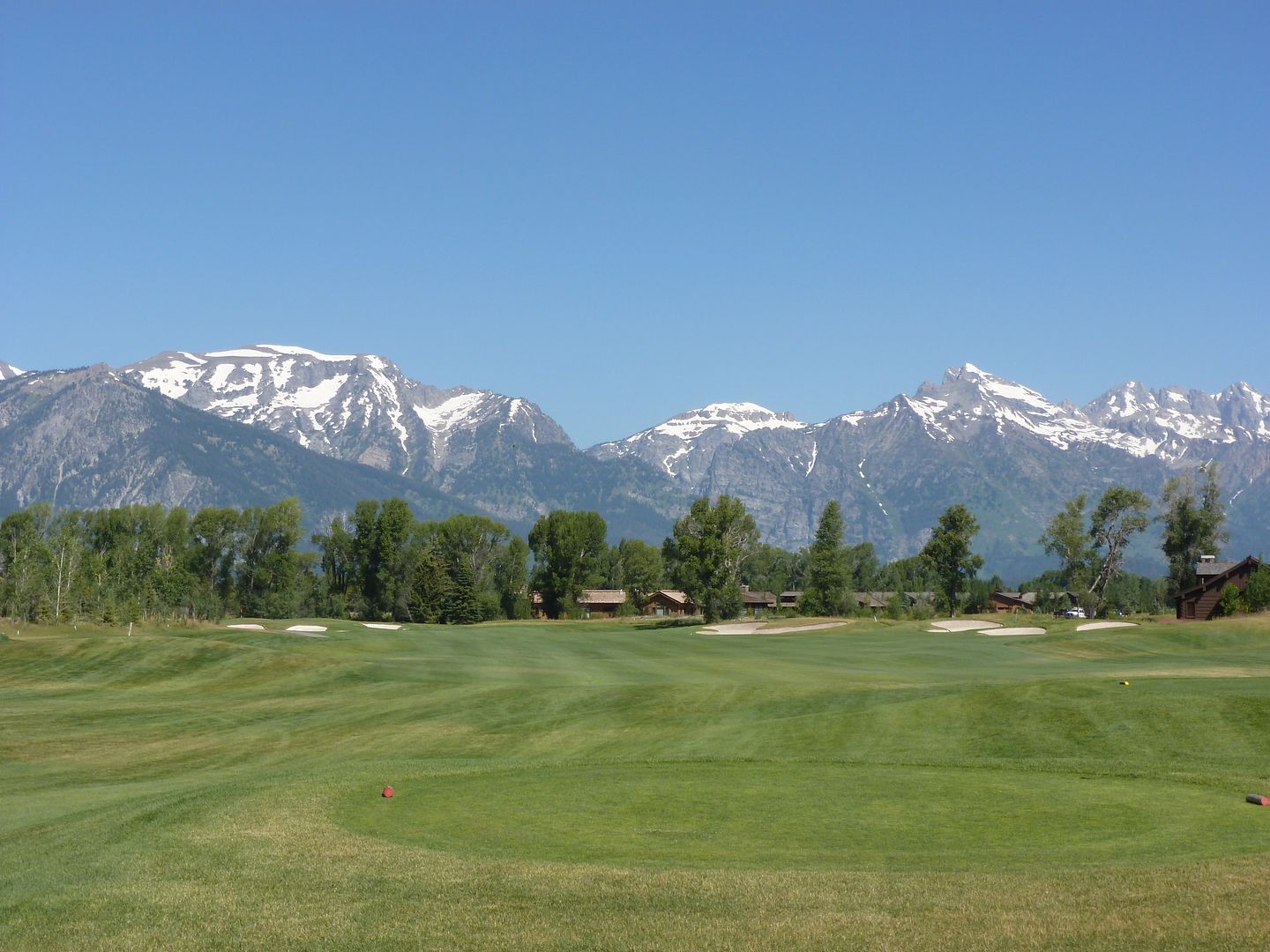
Approach is to a green protected front-left and front-right. This does not appear to be a course where I will be using the ground-game.
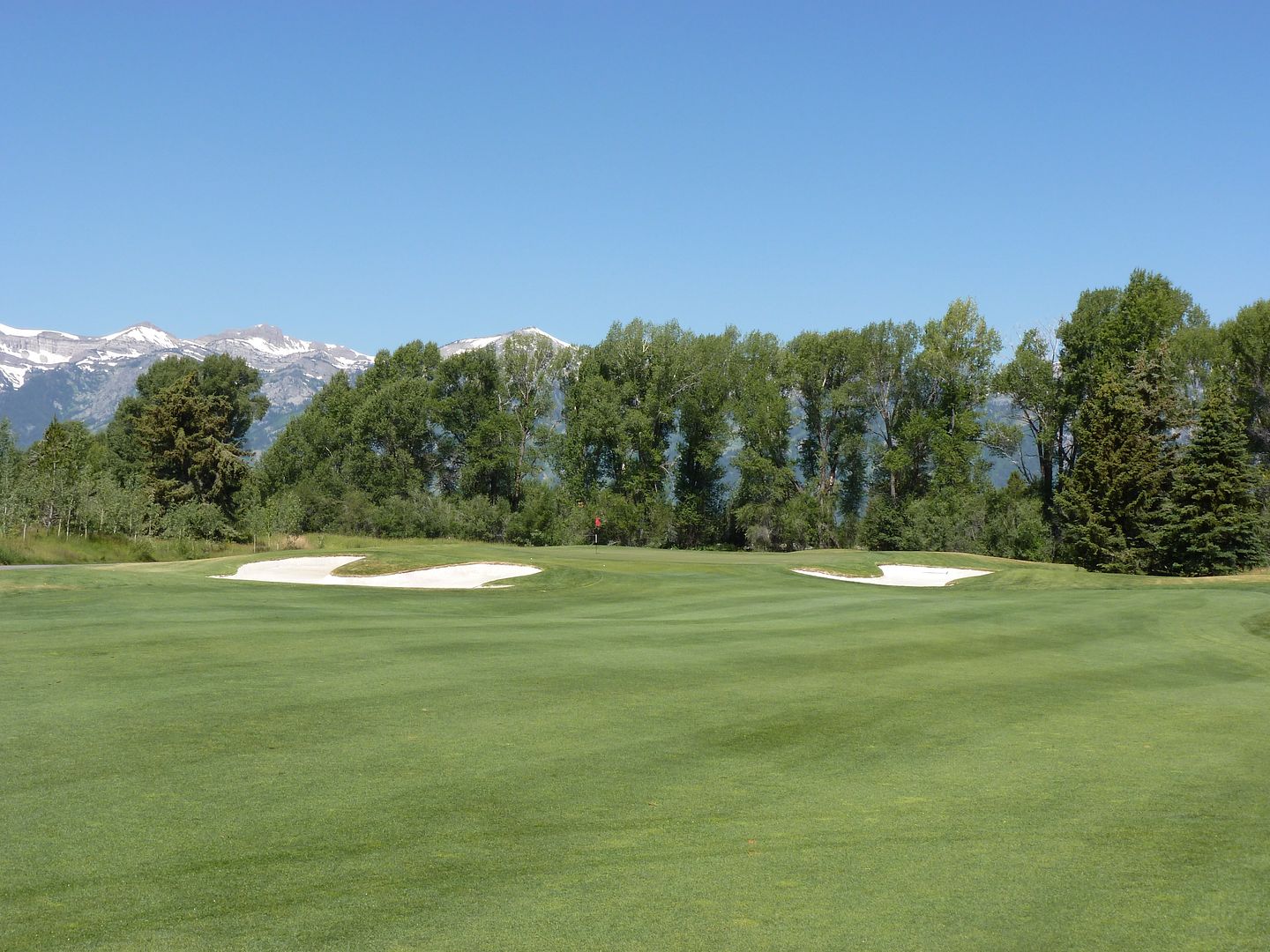
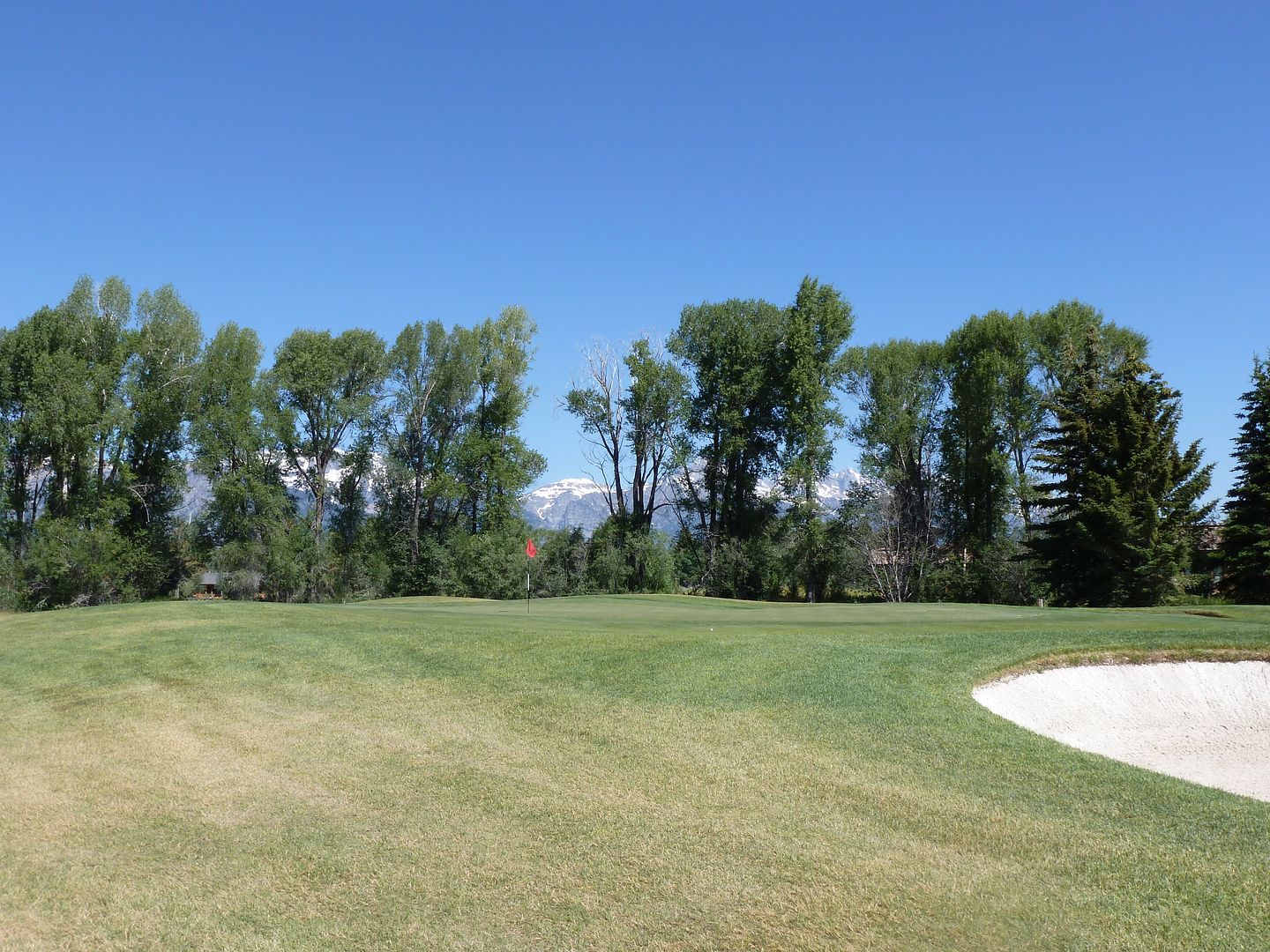
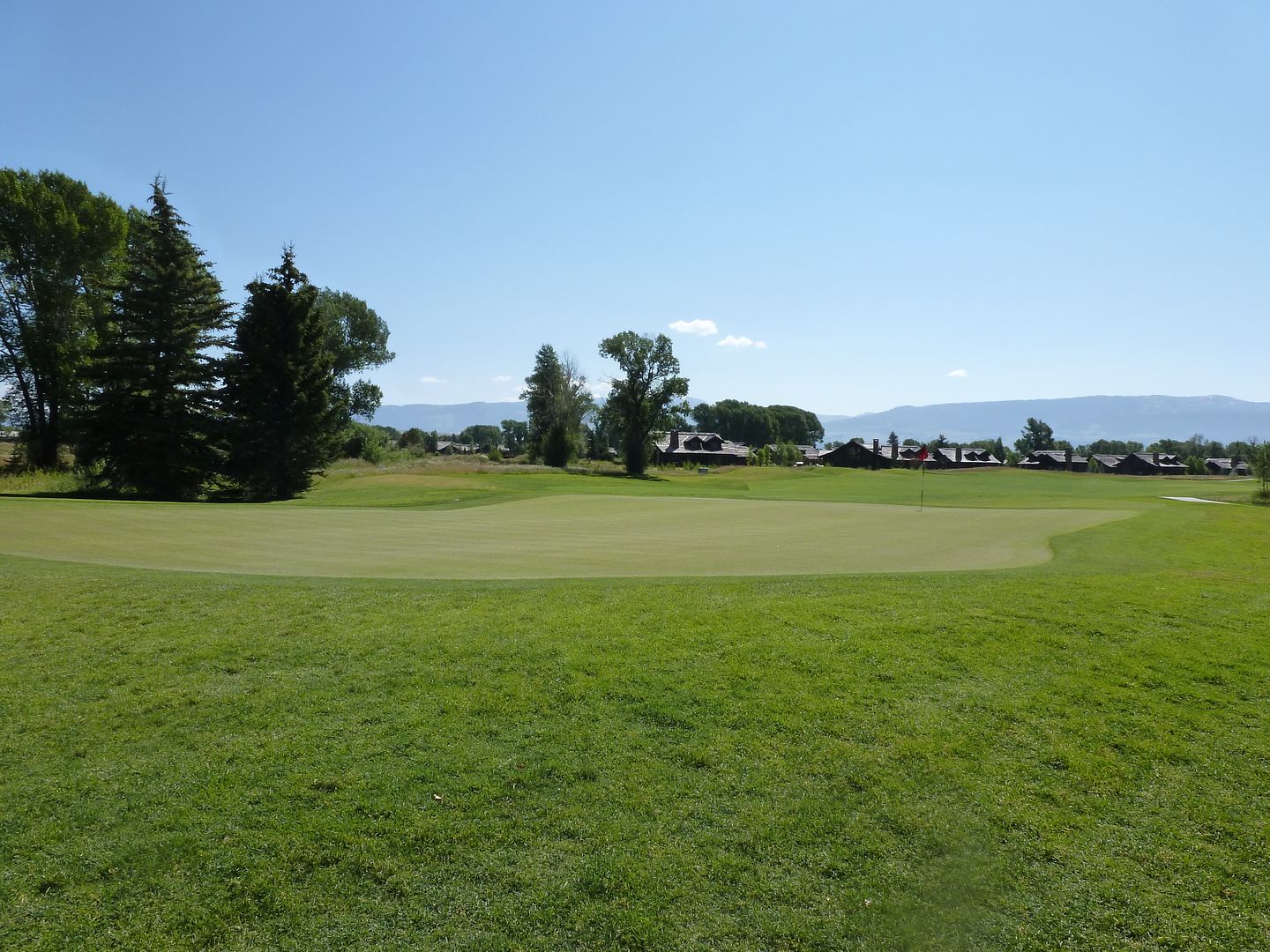
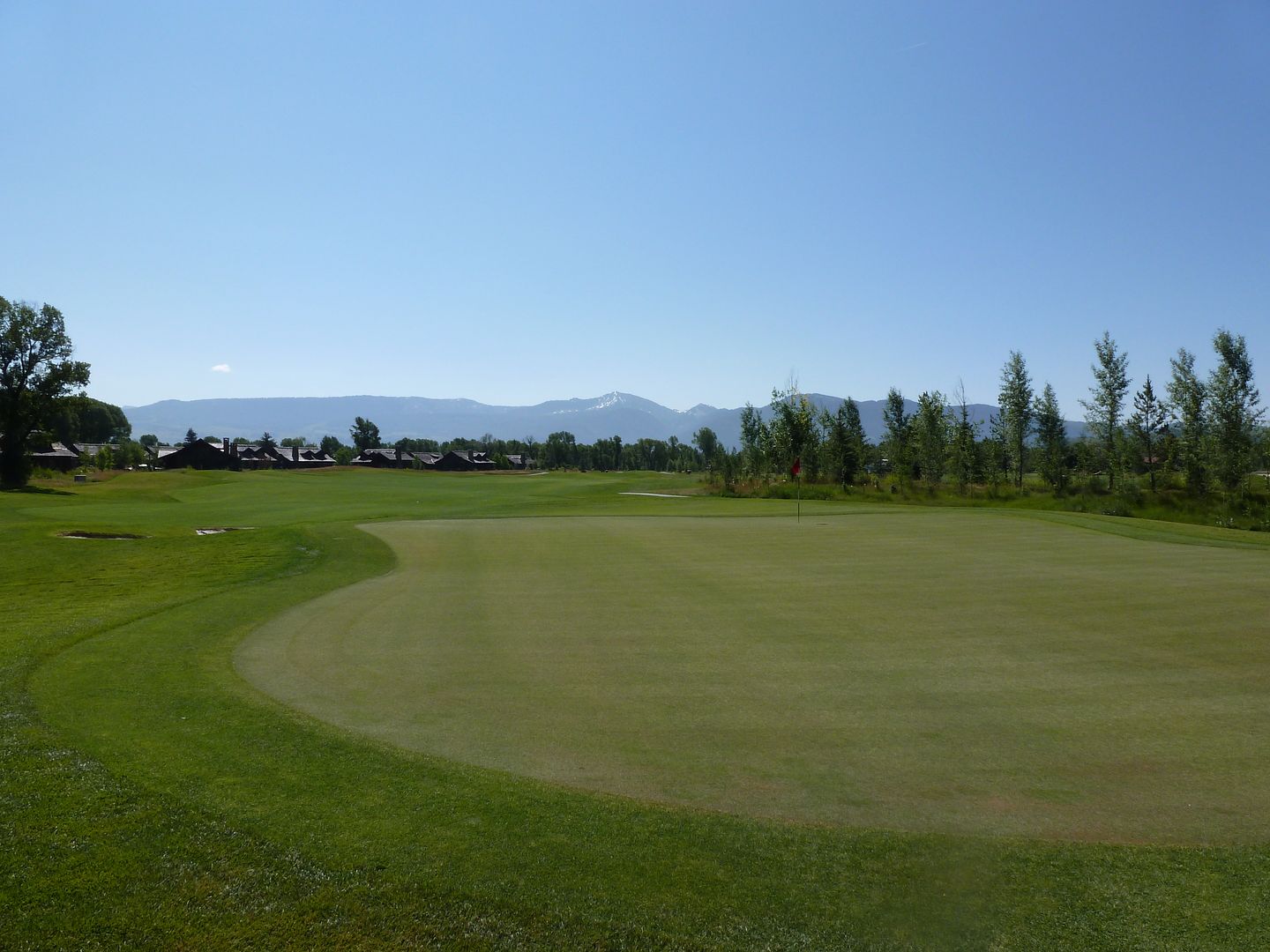 Hole 2: Par 5, 556 Yards
Hole 2: Par 5, 556 YardsAnother tee shot with plenty of width. Bunkers on the right are a bad spot to be.
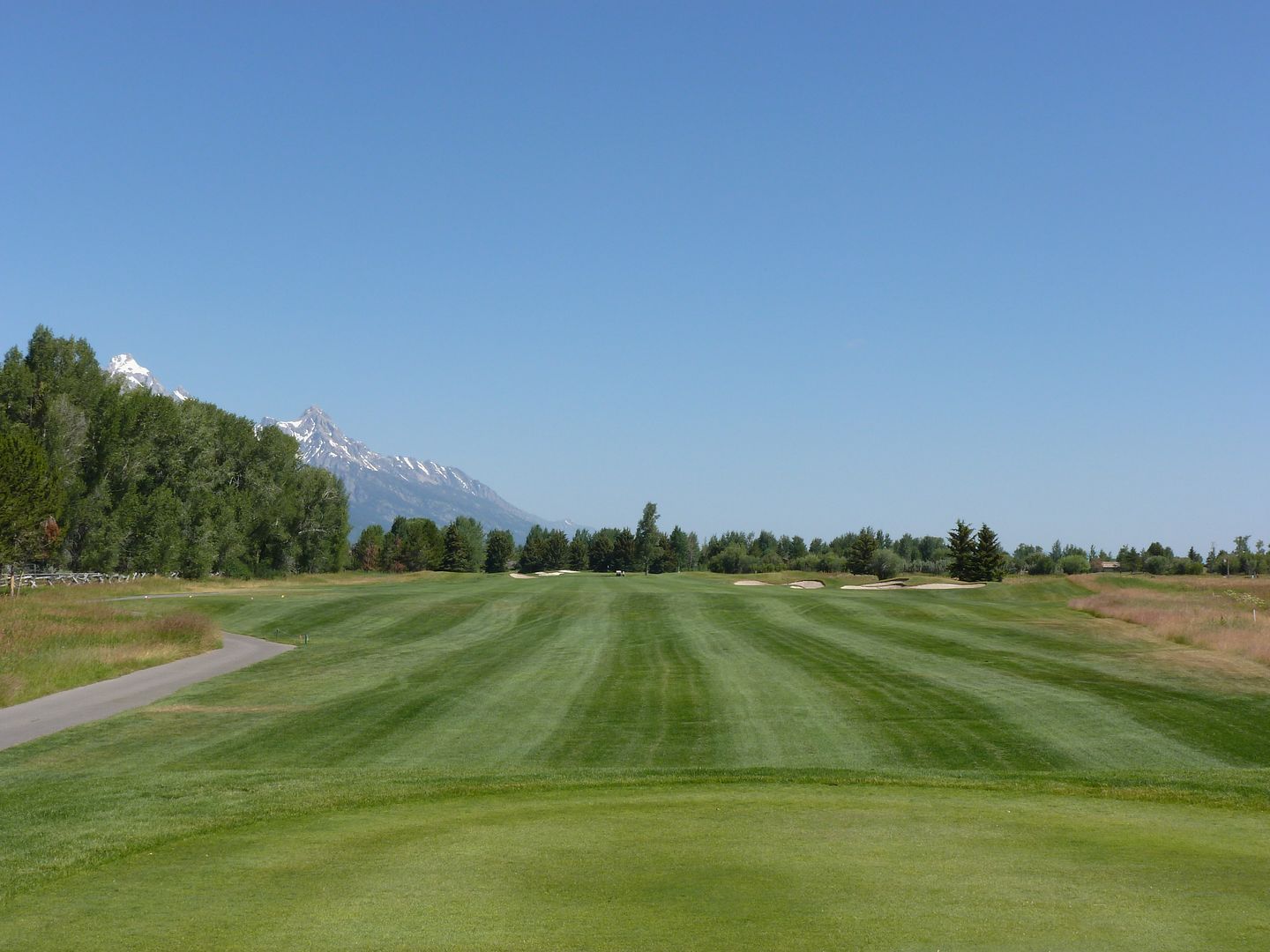
A tee shot that challenges the bunkers on the right is preferred as it leaves the easier angle for the lay-up, which must be on the left side of the fairway. From the left, one must challenge the left bunker to have a clear view of the green.

The bunker in view on the left impacts decision-making on the entire hole. Cleverly placed 140 yards from the green, laying-up to the bunker is a possibility, but the aggressive player will want to get past it to leave a wedge into the green.
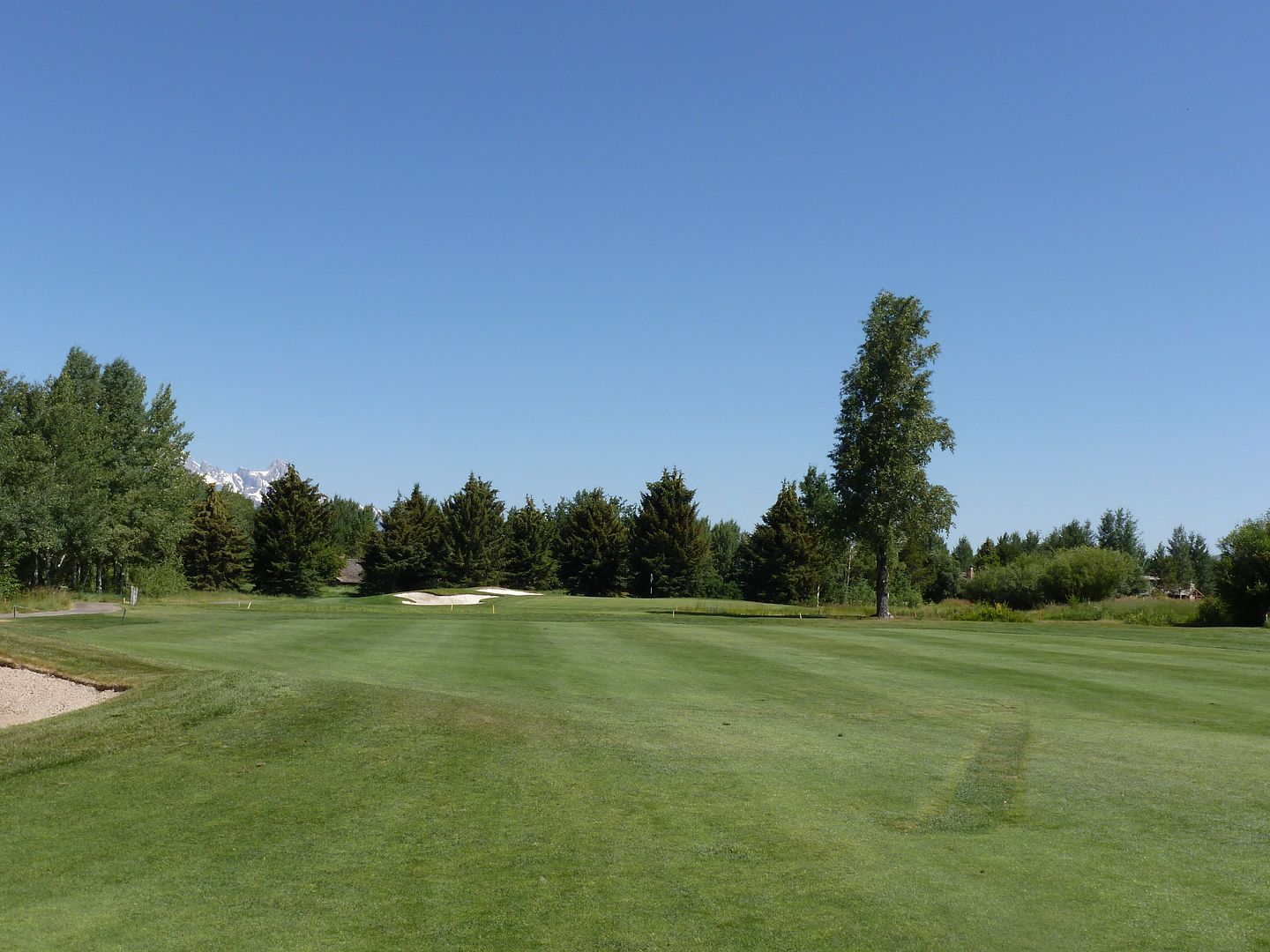
One cannot simply play well to the right of the bunker or they will be partially blocked out by a tree protecting the green.

The green forms a gentle hog's back, with the centre of the green being raised and flat and small run-offs from all sides.

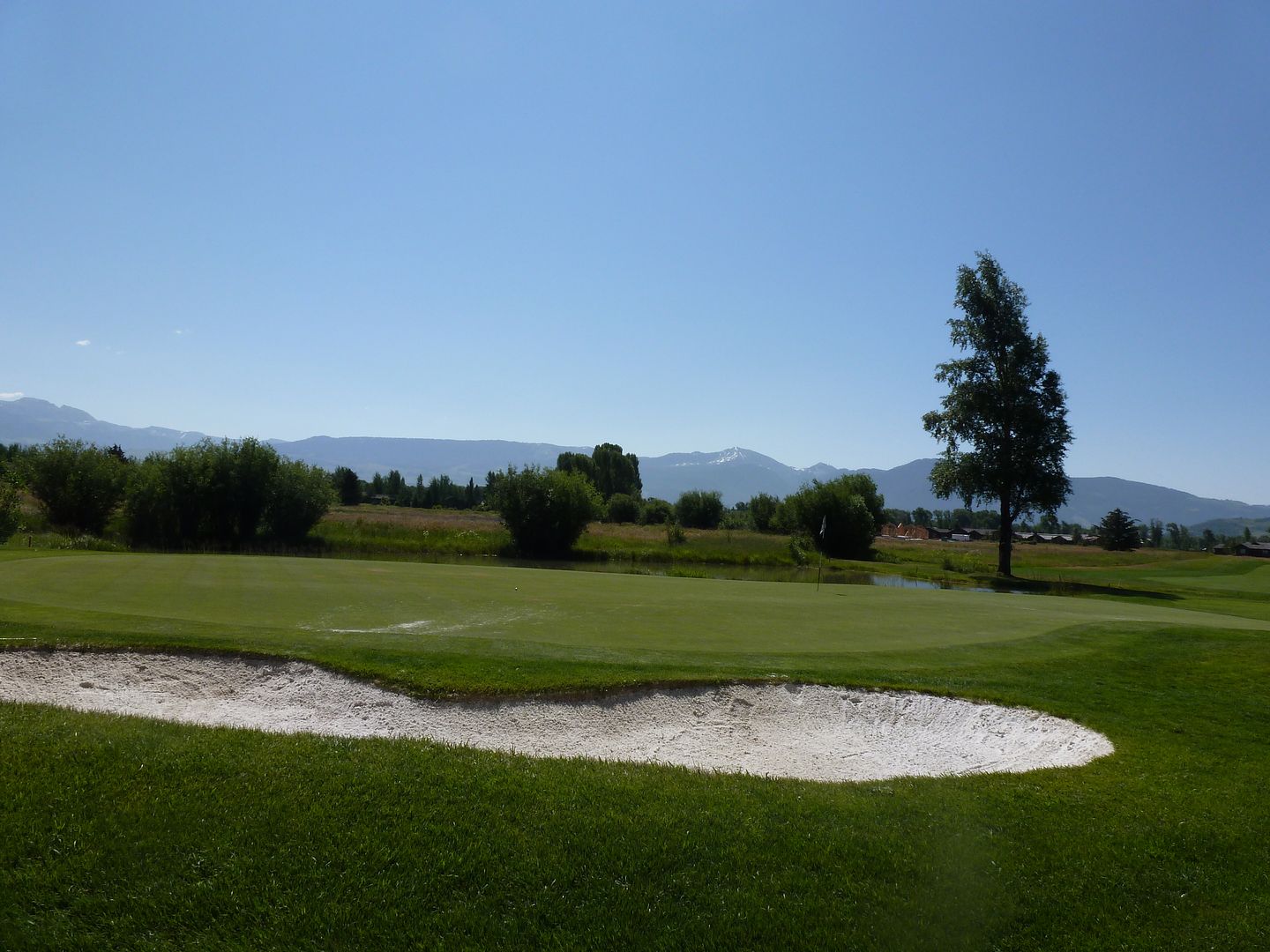
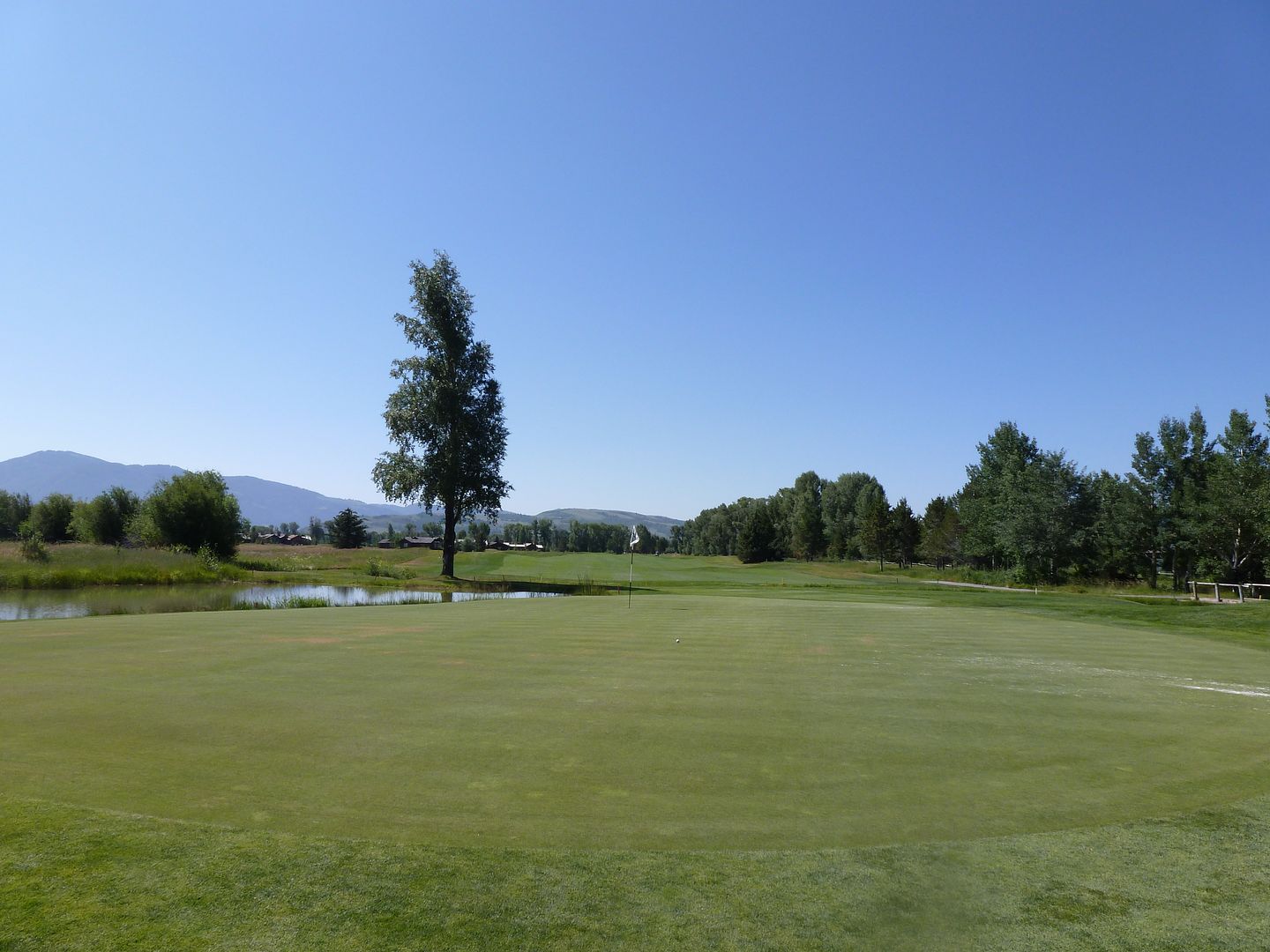 Hole 3: Par 3, 176 Yards
Hole 3: Par 3, 176 YardsA difficult P3 with water short and left and the bailout right protected by a bunker. The trees are very much in play to a back-left pin. From the back tees, the angle becomes even more difficult and the pin becomes blind from the tee (the ol dogleg par-3).
